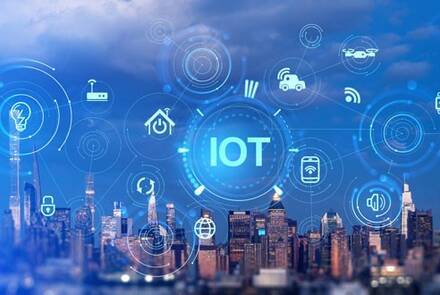Emerging Trends in IoT Security Surveillance
In an era marked by technological advancements, the Internet of Things (IoT) has emerged as a transformative force, particularly in the realm of security surveillance. As we step into the future, the integration of IoT with surveillance systems promises unprecedented capabilities, but it also raises concerns about the security of these interconnected devices. In this article, we explore the evolving landscape of IoT security surveillance and the trends that will shape its future.
Blockchain Integration for Immutable Security: One of the most promising trends in IoT security surveillance is the integration of blockchain technology. Blockchain's decentralized and tamper-resistant nature can provide a robust layer of security for the vast network of interconnected devices. By creating an immutable record of data transactions, blockchain can ensure the integrity and authenticity of surveillance data, reducing the risk of unauthorized access or manipulation.
Machine Learning and AI for Advanced Threat Detection: The combination of machine learning (ML) and artificial intelligence (AI) is revolutionizing threat detection in IoT security surveillance. These technologies can analyze vast amounts of data in real-time, identifying anomalies and potential security breaches. ML algorithms can learn from patterns, continuously improving their ability to distinguish between normal and suspicious activities. This proactive approach enhances the overall security posture of IoT surveillance systems.
Edge Computing for Real-Time Processing: Edge computing is gaining prominence in IoT security surveillance by moving data processing closer to the source – the surveillance cameras and sensors. This reduces latency, enabling real-time analysis and response. By processing data locally, sensitive information can be filtered before transmission, minimizing the risk of data breaches and improving the overall efficiency of the surveillance system.
Enhanced Encryption Protocols: As the number of connected devices increases, so does the need for robust encryption protocols. Future IoT security surveillance systems will likely adopt advanced encryption techniques to safeguard communication between devices and the central control systems. Quantum-resistant algorithms may become essential to protect against emerging threats, ensuring the confidentiality and integrity of data in transit.
Multi-Factor Authentication for Access Control: Securing access to IoT devices is a critical aspect of surveillance system integrity. Multi-factor authentication (MFA) is becoming standard to add an extra layer of protection. Biometric authentication, smart cards, and unique PINs are being integrated to ensure that only authorized personnel can access and control IoT surveillance devices, preventing unauthorized manipulation or interference.
Regulatory Compliance and Standardization: Government and industry bodies recognize the importance of standardizing security measures for IoT devices. Future trends in IoT security surveillance will involve stricter regulations and compliance requirements to ensure that IoT equipment manufacturers and solution providers adhere to security standards. This will not only enhance the overall security of IoT devices but also build trust among users and stakeholders.
Conclusion
As the integration of IoT with surveillance systems continues to advance, addressing security concerns becomes paramount. The future trends in IoT security surveillance, marked by blockchain integration, AI-driven threat detection, edge computing, enhanced encryption, multi-factor authentication, and regulatory compliance, are poised to create a safer and more reliable environment for the deployment of interconnected devices (See also: Future Trends in Smart Cities and IoT). By staying ahead of these trends, the security industry can ensure that the benefits of IoT are harnessed without compromising on safety and privacy.
For more information about Trigyn’s Smart City and IoT solutions, Contact Us.






